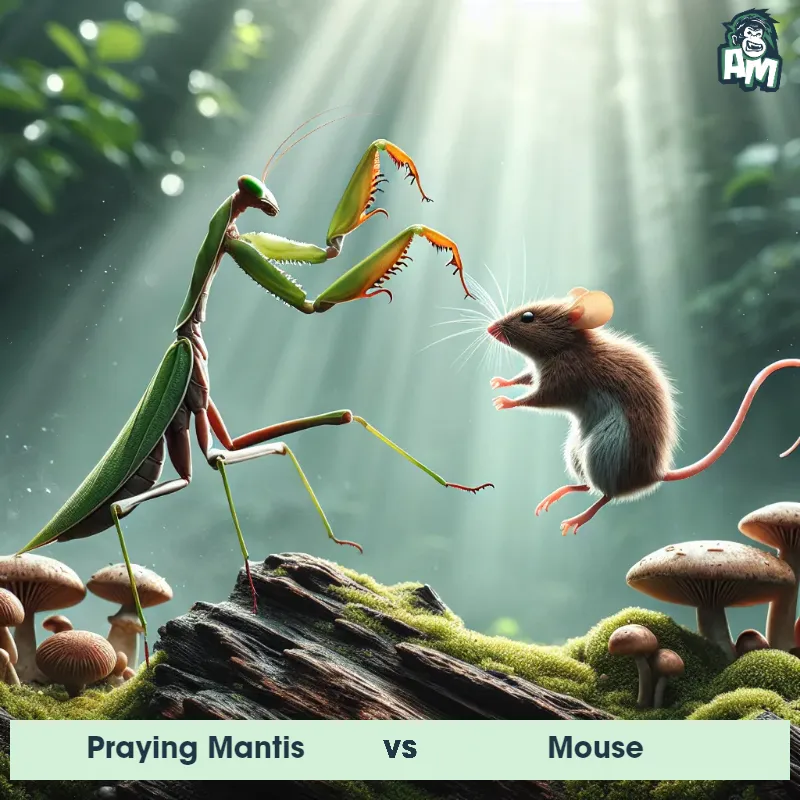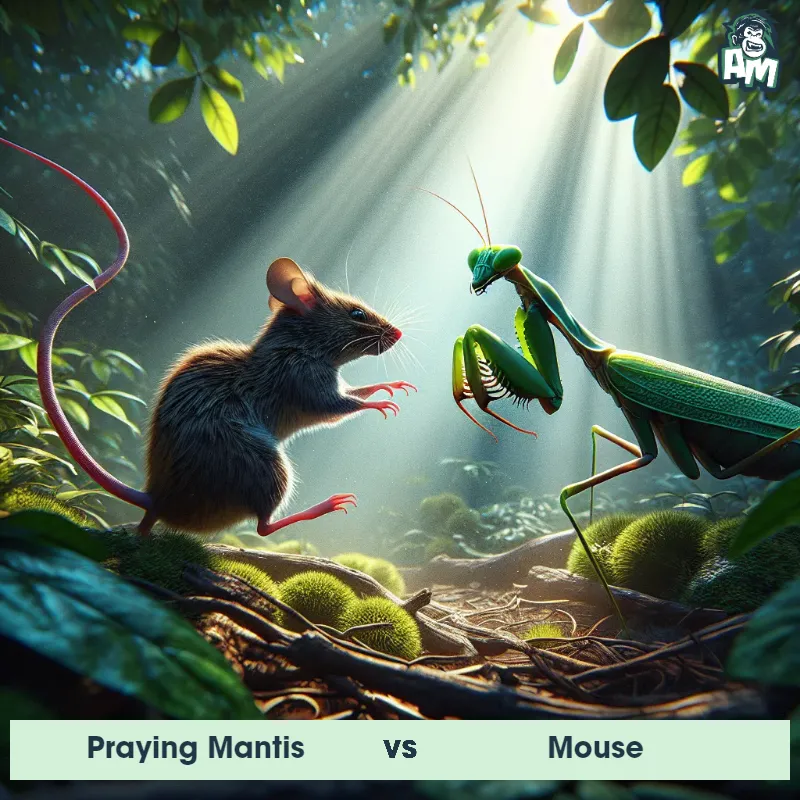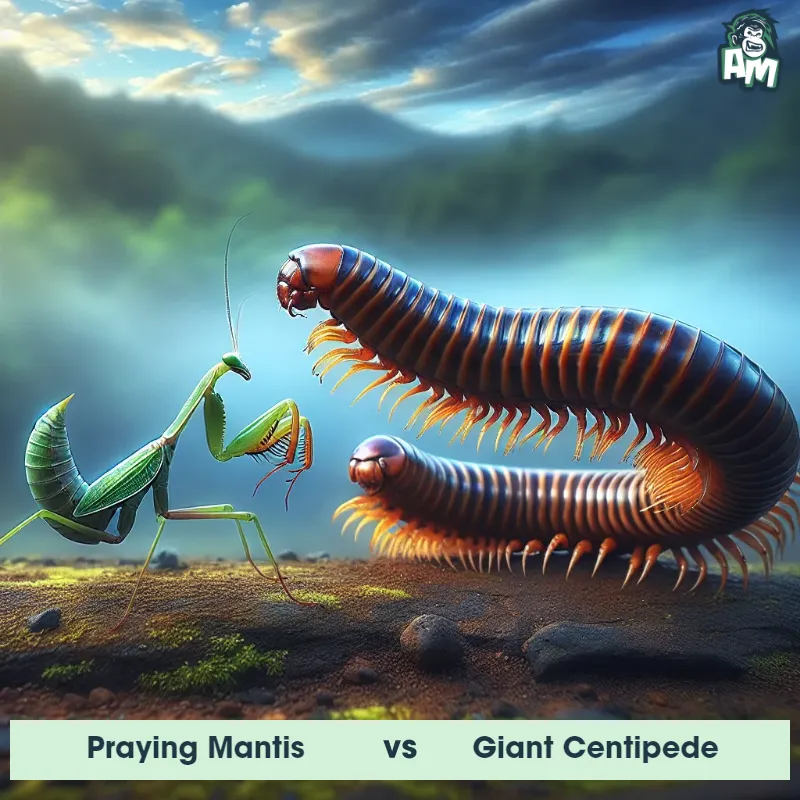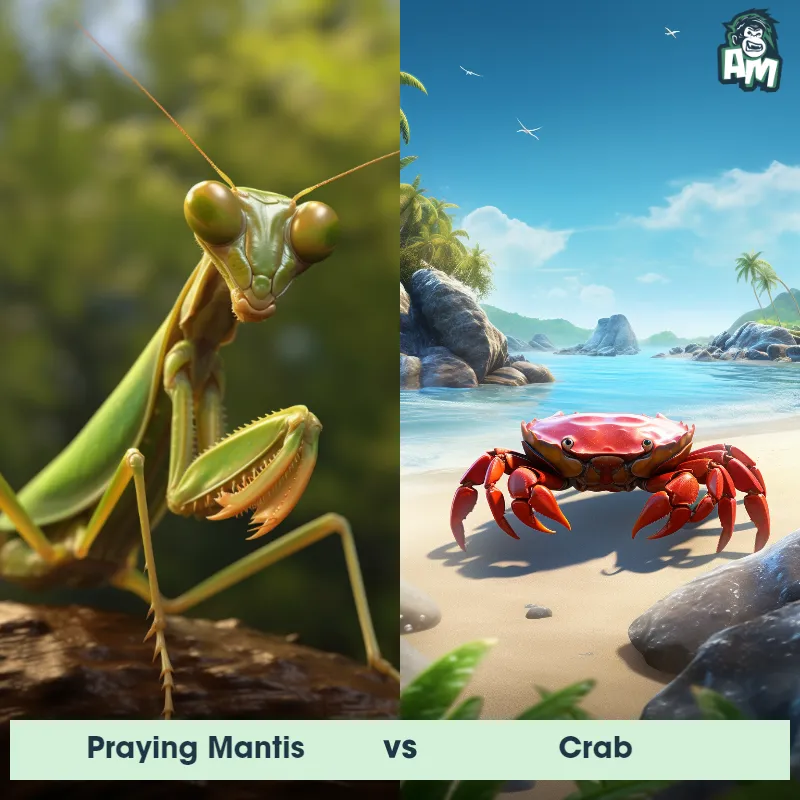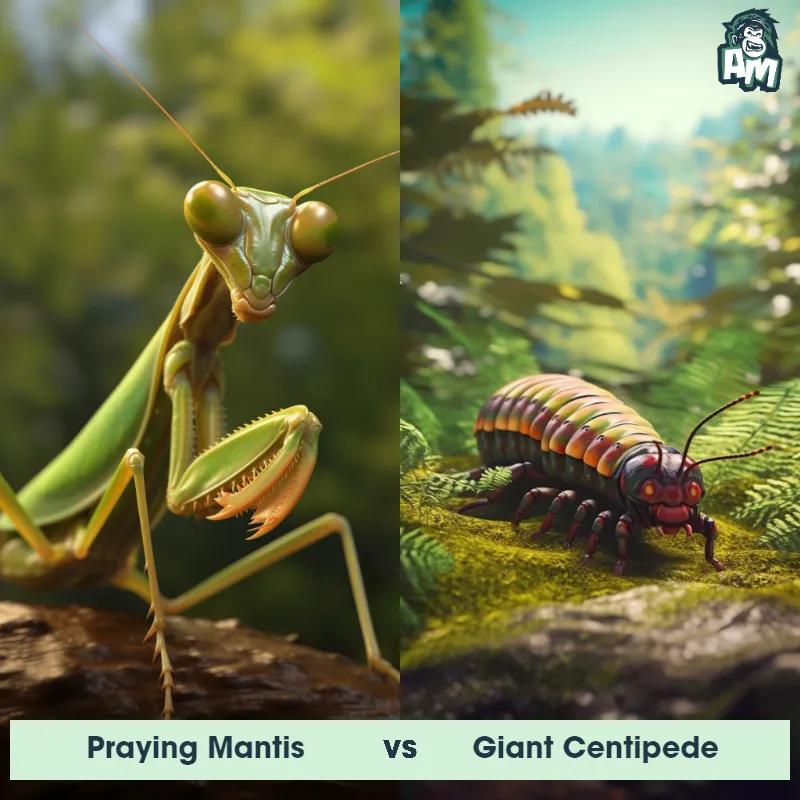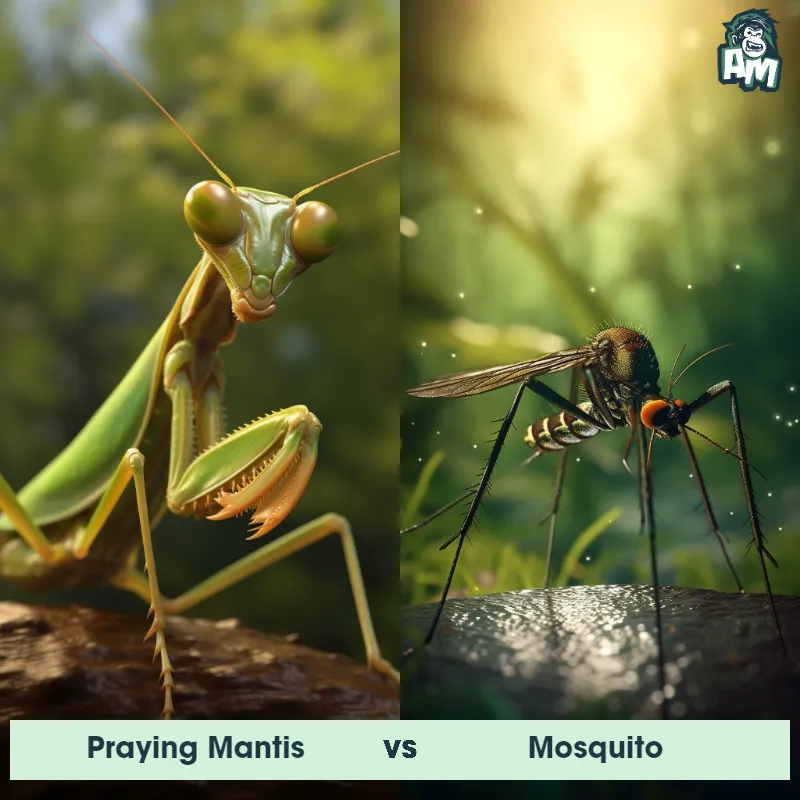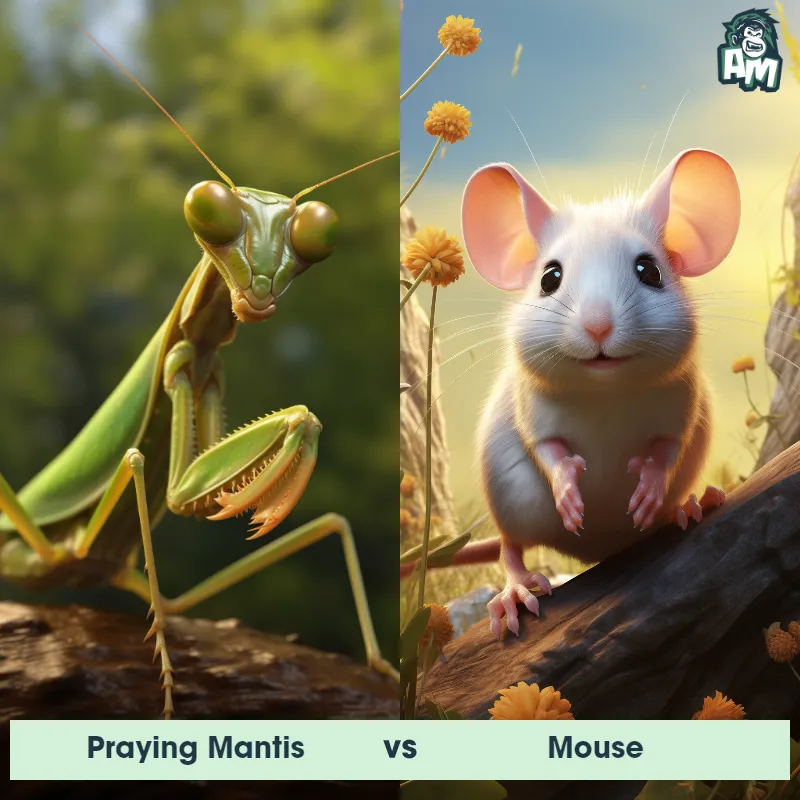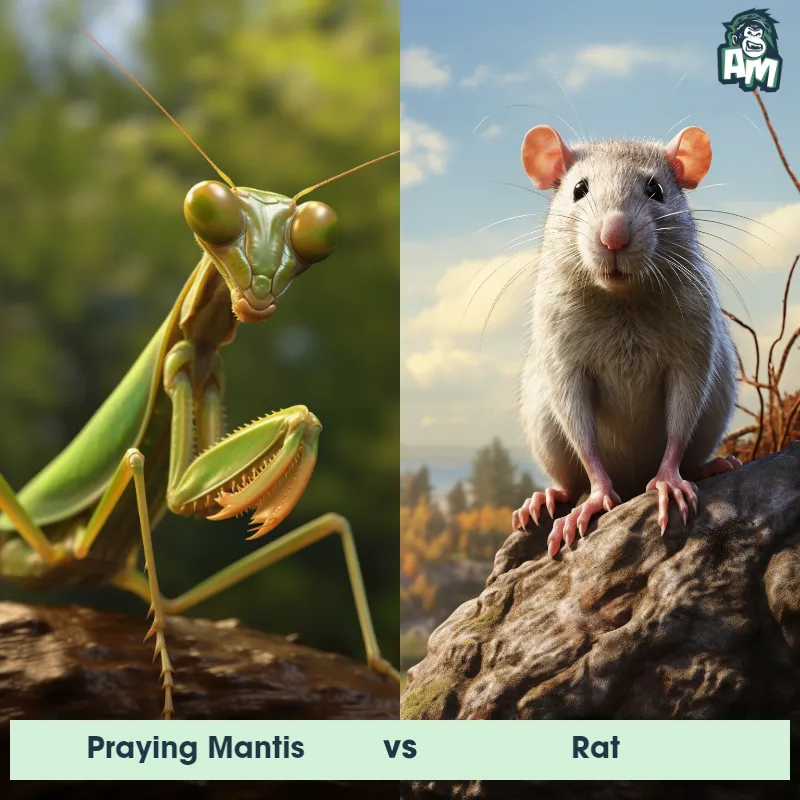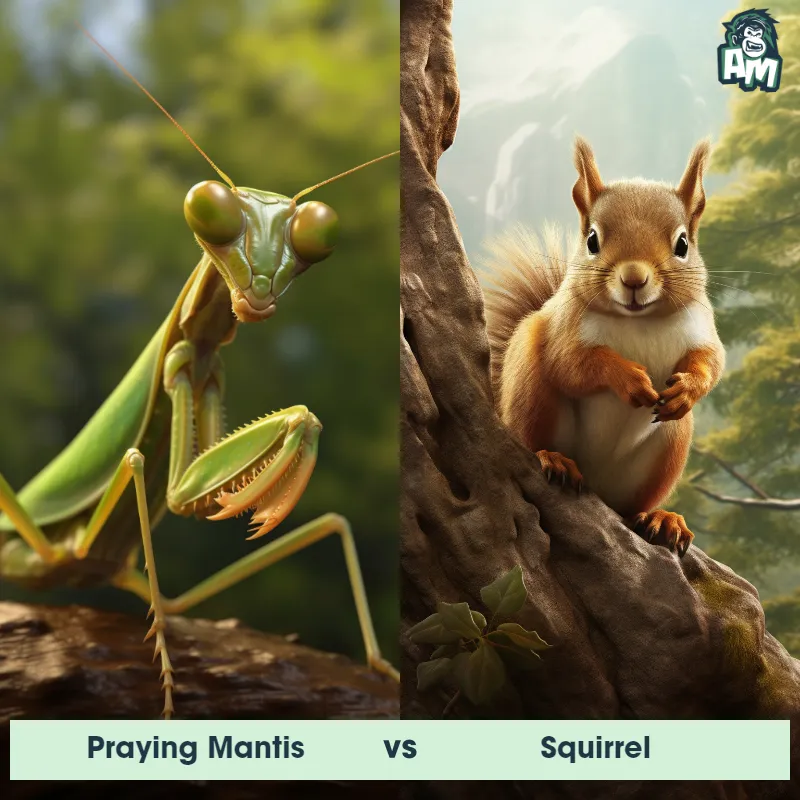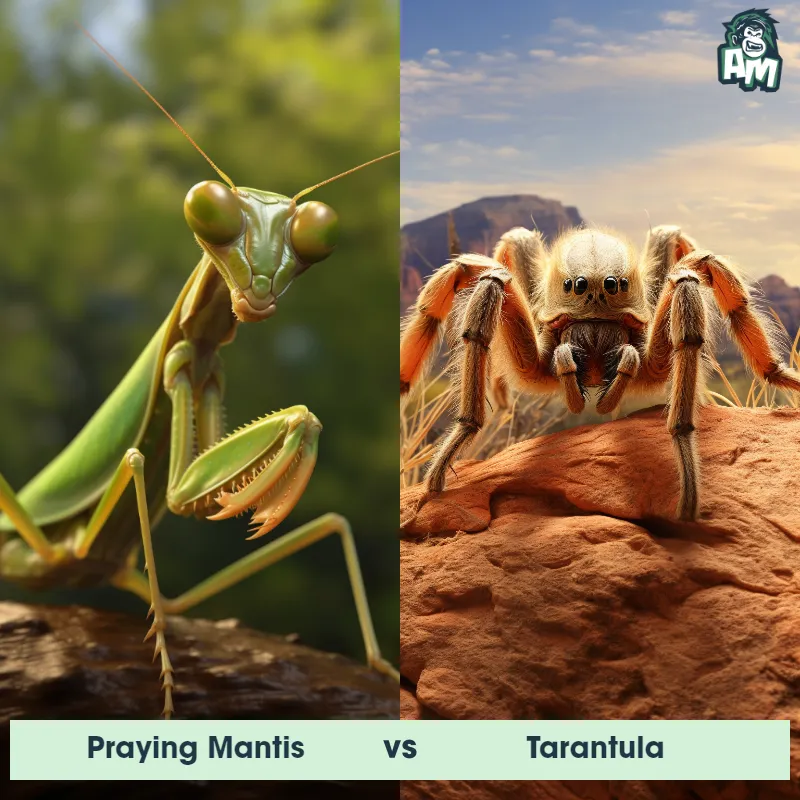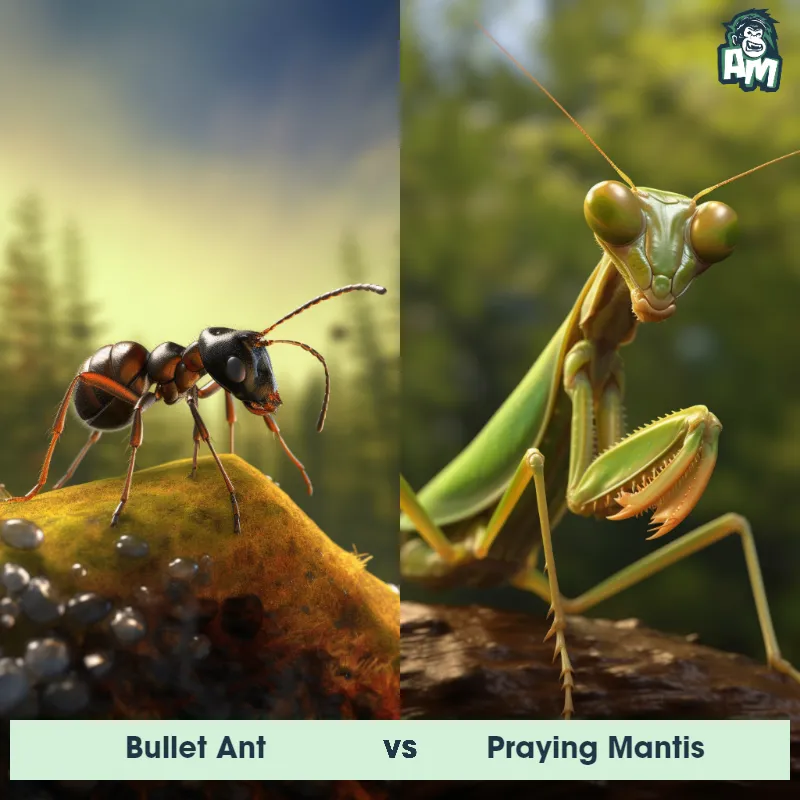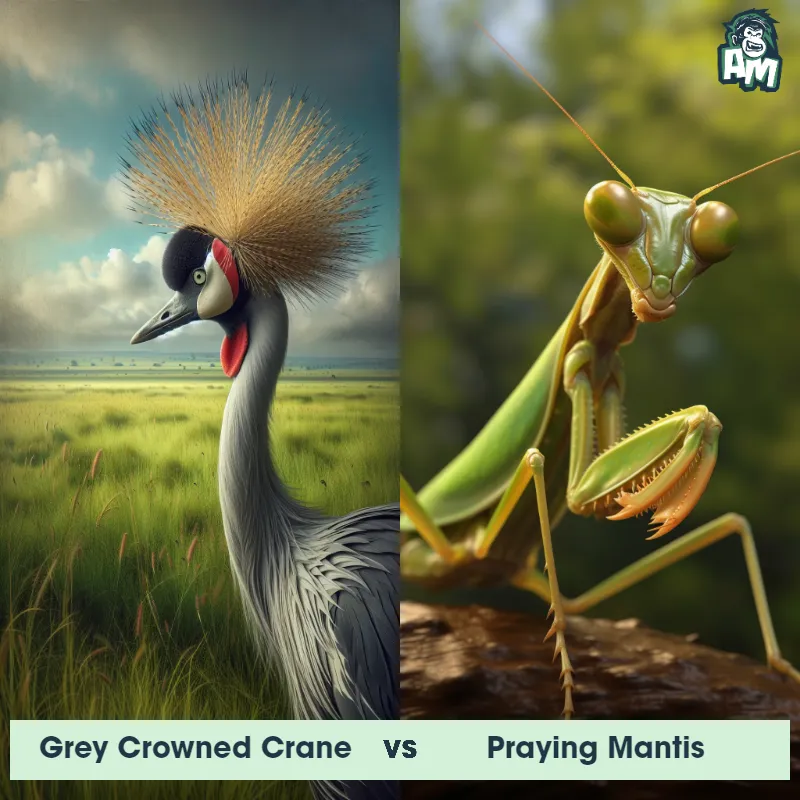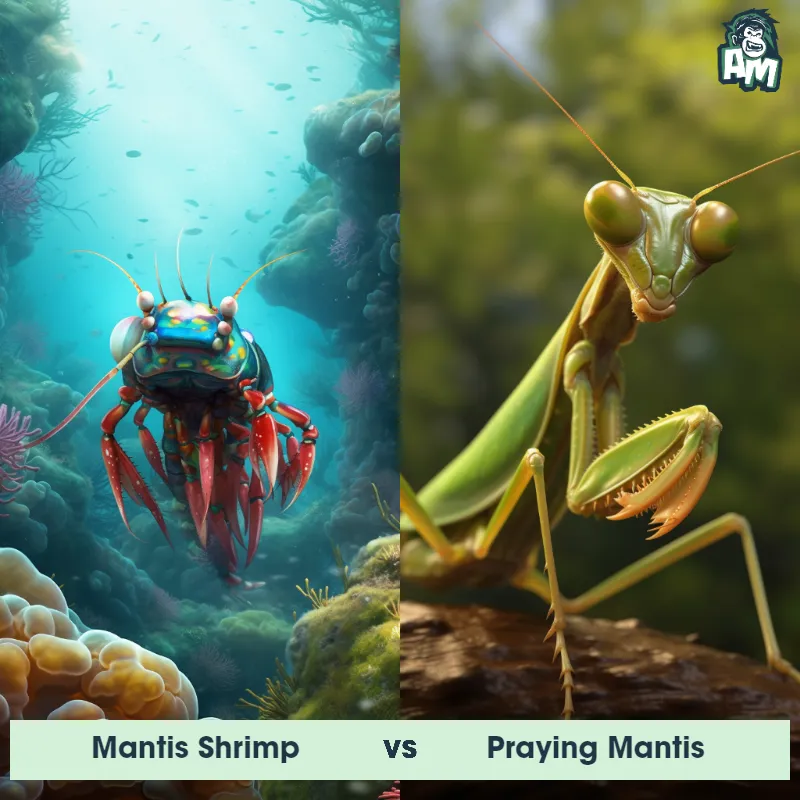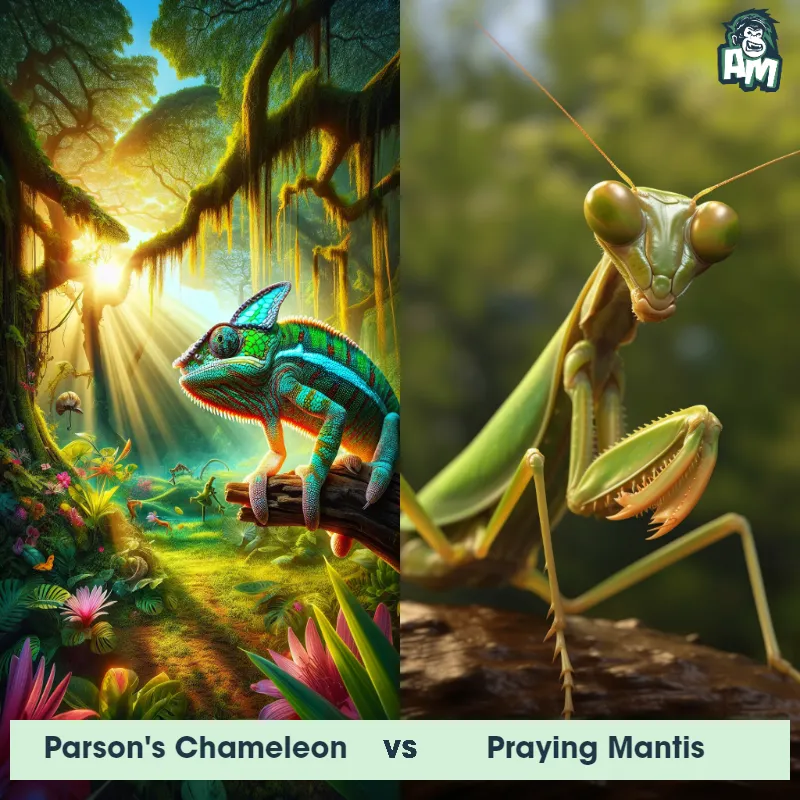The Praying Mantis
The Praying Mantis, known for its distinct appearance and predatory nature, is an insect species belonging to the Mantodea order. These fascinating creatures have elongated bodies with a triangular head and large compound eyes, giving them exceptional vision. Their front legs are modified into strong, grasping limbs, known as raptorial legs, which they employ to capture prey. With sharp mandibles and a remarkable ability to turn their heads 180 degrees, they are formidable hunters. Praying Mantises exist in various colors, including green, brown, and even pink, blending seamlessly with their surroundings to ambush unsuspecting insects.
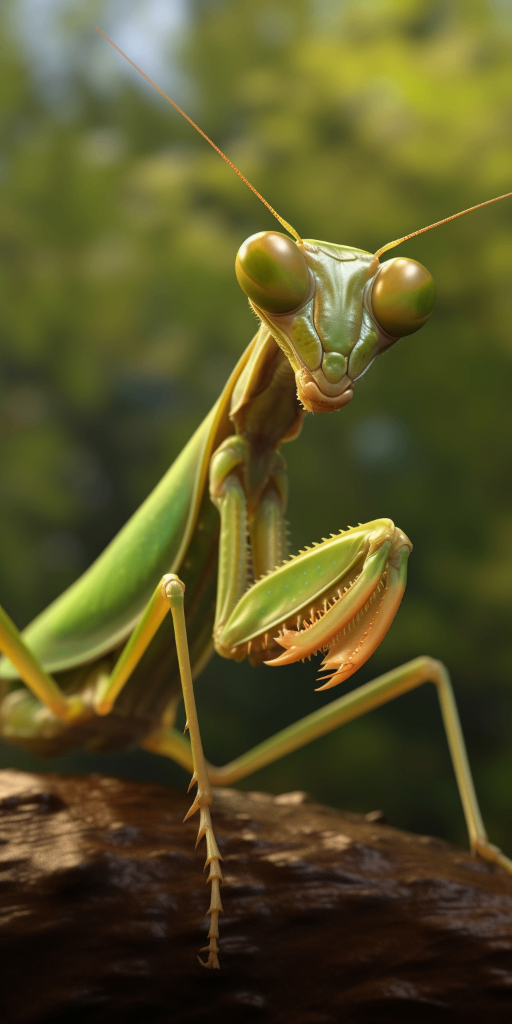
| Praying Mantis | |
|---|---|
| Size | 2-5 inches (5-13 cm) |
| Weight | 0.1-0.6 ounces (3-18 grams) |
| Speed | Speed: 1.5 mph (2.4 km/hr) |
| Key Strength | Powerful grasping front legs |
| Biggest Weakness | Vulnerable to being flipped onto their backs |
| Scientific Name | Mantodea |
| Family | Mantidae |
| Habitat | Terrestrial |
| Geography | Worldwide |
| Diet | Insects, spiders, and other small animals |
| Lifespan | 6 months - 1 year |

The Praying Mantis
The Praying Mantis, known for its distinct appearance and predatory nature, is an insect species belonging to the Mantodea order. These fascinating creatures have elongated bodies with a triangular head and large compound eyes, giving them exceptional vision. Their front legs are modified into strong, grasping limbs, known as raptorial legs, which they employ to capture prey. With sharp mandibles and a remarkable ability to turn their heads 180 degrees, they are formidable hunters. Praying Mantises exist in various colors, including green, brown, and even pink, blending seamlessly with their surroundings to ambush unsuspecting insects.
Fun Fact: One captivating fact about Praying Mantises is their cannibalistic behavior during mating, where the female devours the male shortly after or even during copulation, providing her with valuable nutrients to aid in egg production.
| Praying Mantis | |
|---|---|
| Size | 2-5 inches (5-13 cm) |
| Weight | 0.1-0.6 ounces (3-18 grams) |
| Speed | Speed: 1.5 mph (2.4 km/hr) |
| Key Strength | Powerful grasping front legs |
| Biggest Weakness | Vulnerable to being flipped onto their backs |
| Scientific Name | Mantodea |
| Family | Mantidae |
| Habitat | Terrestrial |
| Geography | Worldwide |
| Diet | Insects, spiders, and other small animals |
| Lifespan | 6 months - 1 year |
Match Highlights
Praying Mantis Matchups
We use AI to simulate matchups between the Praying Mantis and other animals. Our simulation considers size, strength, and natural predatory behaviors to determine the most likely outcome.

Can't find the Matchup you want?
Create Your Own MatchupPraying Mantis: Diet, Predators, Aggression, and Defensive Behaviors
What do Praying Mantises eat?
Praying Mantises are carnivorous insects that primarily feed on other insects, such as crickets, flies, bees, and even other mantises. Praying Mantis are known for their stealthy hunting techniques, using their camouflage to blend in with their surroundings before ambushing their prey.
Do Praying Mantises have any predators?
While Praying Mantises are skilled predators themselves, Praying Mantis do have natural predators such as birds, reptiles, and larger insects. In their nymph stage, Praying Mantis are particularly vulnerable to predators due to their small size.
Are Praying Mantises aggressive?
Praying Mantises are not inherently aggressive towards humans, but Praying Mantis can exhibit aggression towards other mantises or when hunting for prey. Praying Mantis may display defensive behavior if Praying Mantis feel threatened, such as raising their front legs in a threatening manner.
Do Praying Mantises fight?
Praying Mantises are territorial insects and will engage in fights with other mantises, especially during mating season. These fights can be intense and sometimes result in injury or death. The males often have to be cautious when approaching females to avoid being eaten after mating.
How do Praying Mantises defend themselves?
Praying Mantises have several defense mechanisms to protect themselves from predators. Praying Mantis are equipped with sharp spines on their forearms to grasp and pierce attackers, and Praying Mantis have the ability to blend in with their surroundings to evade detection. Praying Mantis can also turn their heads 180 degrees to improve their field of vision and spot potential threats.
What is the biggest weakness of Praying Mantises in a fight?
Despite their impressive hunting skills, Praying Mantises have a relatively fragile exoskeleton that can be easily damaged in a fight. If their exoskeleton is compromised, Praying Mantis are vulnerable to injuries that can impair their ability to hunt or defend themselves. This weakness makes them highly dependent on their agility and stealth to avoid confrontations whenever possible.
Fun Fact: Although primarily known for their stealthy nature and stillness, Praying Mantises are capable of fast movements when capturing prey, sometimes striking at speeds of up to 50 miles per hour.
Fun Fact: The Praying Mantis possesses a unique ability to rotate its head almost fully around, enabling it to scan its surroundings for potential threats or prey without needing to move its entire body.



